
There's a lot to like about comparison shopping engines (CSEs). They increase your store's visibility, attract new customers, and best of all, boost your sales. But with so many CSEs out there, it can be hard to know which ones to tackle first, let alone figure out how to become an expert in them all.
To remedy that, let's look at CPC Stategy's top CSEs (in no particular order) and get some insider tips on how to succeed on each.
1. Google Product Listing Ads (Paid)
Google Shopping is one of the biggest and most popular shopping engines around. To utilize it, you'll need to use two platforms: Google's Merchant Center and Google AdWords. In the Merchant center, you'll manage all of your products. In your AdWords account, you'll manage your Product Listing Ads (PLAs), set a daily budget, and adjust bids.
Once submitted, your ads can be seen both in regular search results and on Google's shopping site. Plus, Google Shopping is available in multiple countries such as the UK, Germany, France, Japan, Italy, Spain, Netherlands, Brazil, Australia, and Switzerland.
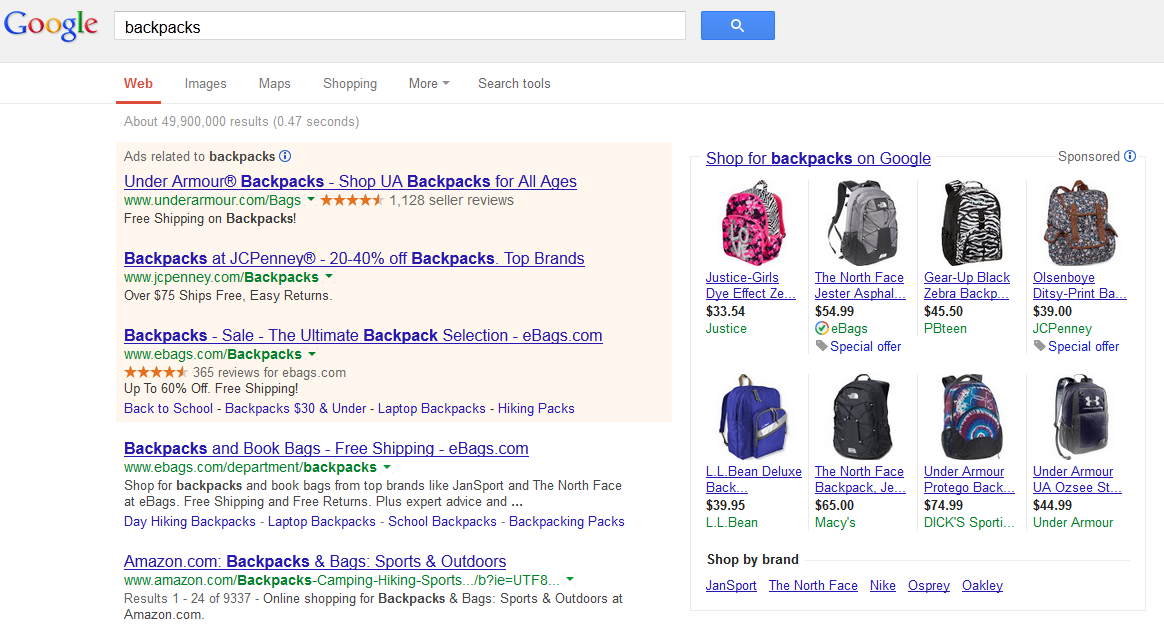
Pros of Google Product Listing Ads:
- They have a 21% higher click-through rate than text ads
- No minimum bids, making it ideal for those with smaller budgets
- Free to include a marketing message, such as “Free shipping on orders over $75+”
Cons of Google Product Listing Ads:
- Must manage two platforms (Merchant Center and AdWords) to run your shopping feeds
- Strict guidelines on data quality leading up to account suspension
- CPCs rates have increased by 53% compared to last year
Insider tips on Google Product Listing Ads:
- Avoid watermarked images
- Don't use all uppercase product titles
- Avoid using “free shipping” in your product descriptions
2. Amazon Product Ads (Paid)
You probably know that you can sell on Amazon via Amazon Marketplace. But did you know you can also advertise with Amazon Product Ads? These product ads are shown to Amazon’s 44 million customers each month in many places, including the Detail Page, Search and Browse, Tower Ads, and Buy Box. To have your ads displayed, you have to set up a Seller Central account and have a daily budget and minimum bids. Amazon Product Ads is also available for merchants to use in the UK.

Pros of Amazon Product Ads:
- Allows products that can’t be listed in Amazon Marketplace
- Provides suggested bids to help you bid wisely
- Has an easy bidding system where the products are divided based on product categories, with three different price ranges in each category
Cons of Amazon Product Ads:
- No control over which categories your products are submitted to
- Stricter content requirements than Amazon Marketplace
- Automatically decides the type of ad placement: All or Targeted
Insider tip on Amazon Product Ads
- Increase visibility and reach the most relevant customer by using up to five keywords that best describe each product
3. NexTag (Paid)
NexTag is popular for helping shoppers find great deals on products, event tickets, real estate, travel tickets, and coupons. It gets 30 million unique visitors every month and is also available in Australia, Canada, France, Germany, Italy, Japan, and Spain.
To list your ads on NexTag, you need a monthly budget and minimum bid for all categories. It also has three traffic-driving programs you can take advantage of: Display Rank, Merchant Logo, and Marketing Message. And if you're in the business of typically-restricted items like adult accessories or prescription drugs, you're in luck; NexTag's requirements are currently less strict than some other engines.
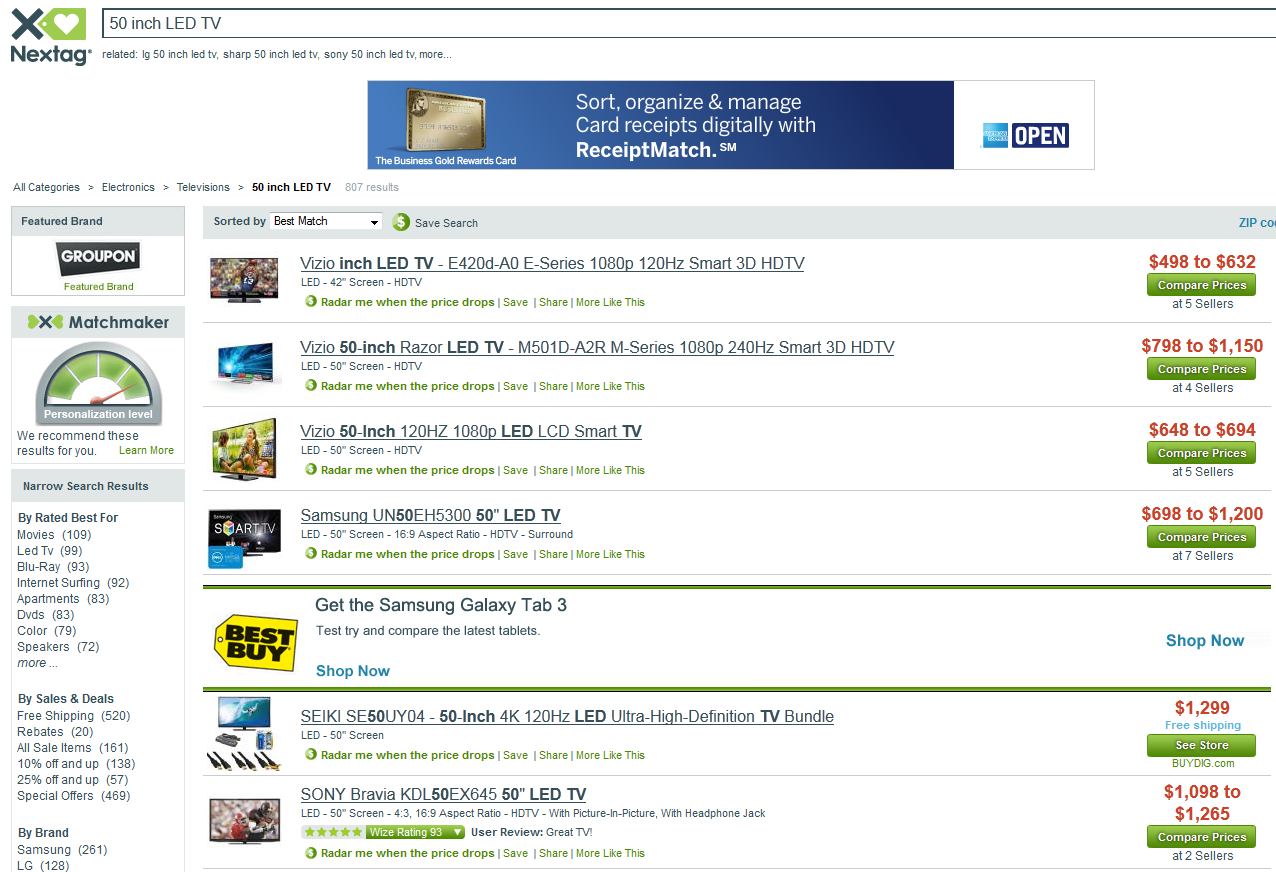
Pros of NexTag
- You can collect reviews from customers once the sale is completed to increase credibility
- ROI Optimizer helps easily track sales and conversion rates on the NexTag website
- You can create complex shipping rules using the advanced interface
Cons of NexTag
- Uses a bid ranking program to display products—the higher the bid, the better the position
- Monthly budget is consumed faster. Products are displayed to qualified traffic in an accelerated manner instead of being spread across a day or month
- Promotional marketing message costs anywhere from $0.05 to $0.10 based on the category
Insider tip on NexTag
- Set Max CPC bids on your best selling products to beat your competition and get the highest rank possible
4. Shopping.com (Paid)
Shopping.com is part of the eBay commerce network and has 8 million online purchasers every month. You can advertise your products using targeted ad placements on Shopping.com and its partner websites such as TheFind and Bing. When you do, customers will see product details such as title, price, image, and shipping details along with product reviews and ratings.
Shopping.com works on a monthly budget (minimum of $100 to get started) and offers free optimization tools such as an ROI Tracker and Survey Tool. In terms of your international reach, you can advertise in the United Kingdom, France, Germany, and Australia.
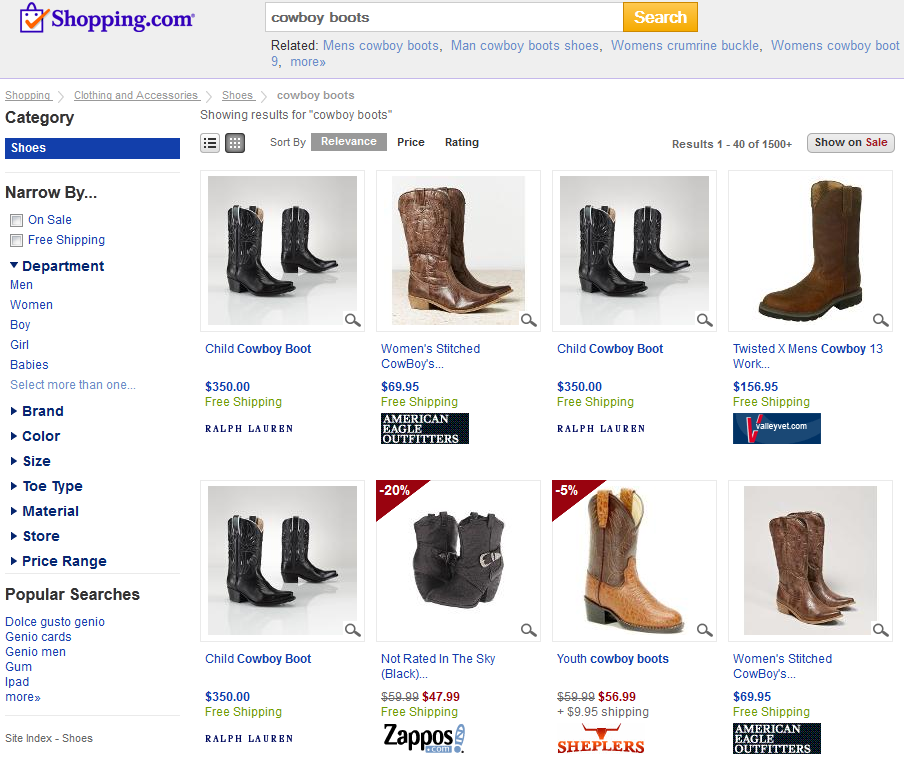
Pros of Shopping.com
- You can see your competitors' top bids
- It works on a value-based pricing model—bids are adjusted based on the quality of traffic
- Free ROI tracker provided to measure performance and conversions
Cons of Shopping.com
- Automatic payment plan requires linking to PayPal account; no credit cards allowed
- No product level bidding
- No promotional marketing messages allowed
Insider tip on Shopping.com
- Sign up with Google AdWords to get listed in the Shopping.com “Sponsored listings" section
5. Shopzilla (Paid)
Shopzilla, known for helping shoppers find unique retailers and sales, has over 100 million products listed and 20 million unique monthly visitors. If you advertise on Shopzilla, be sure to have a monthly budget and minimum CPCs for various categories, and be aware that it rates businesses to help consumers make their purchasing decisions.
Being on Shopzilla also means you get featured in Bizrate and Beso.com, and can advertise products in the UK, France, and Germany.
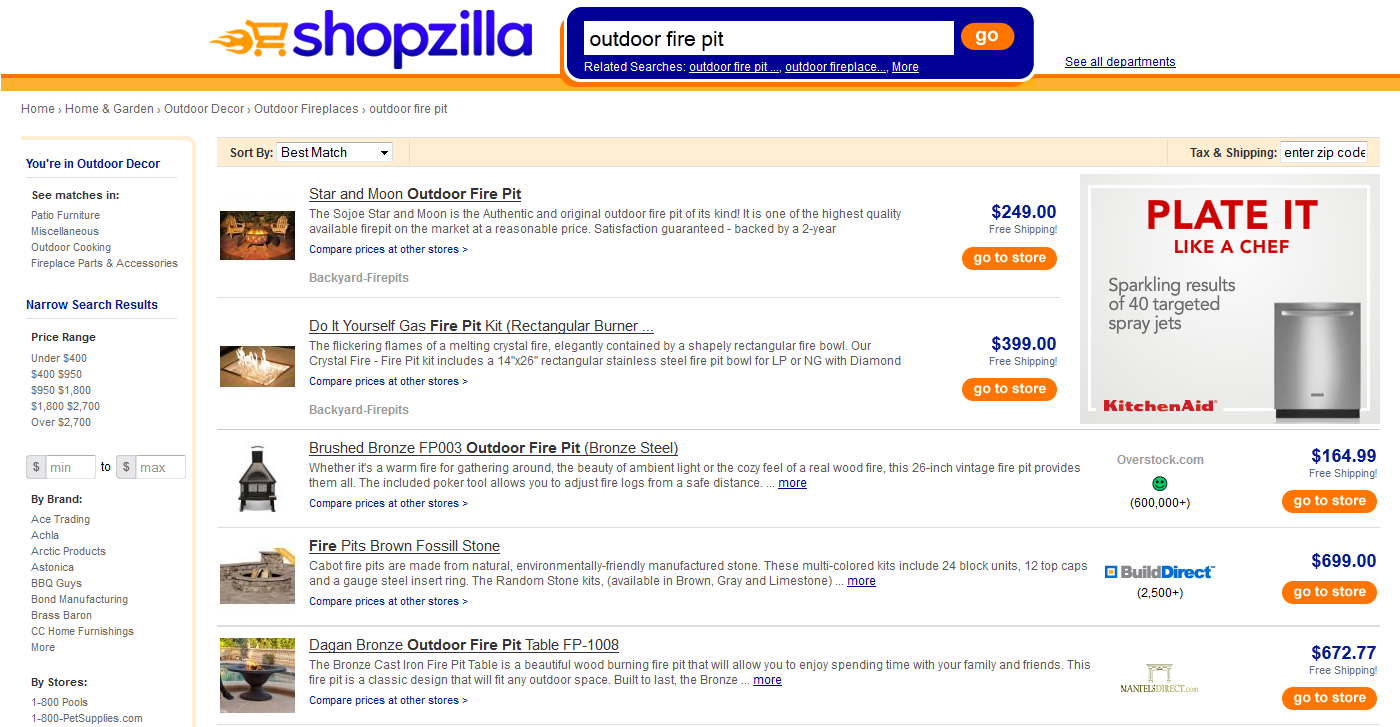
Pros of Shopzilla
- You can bid at three levels: Category, Sub-category, and Product level
- It uses a smart pricing model where CPC is adjusted based on the traffic quality
- You're charged $0.01 more than the next highest bid in a given subcategory
Cons of Shopzilla
- Products are categorized as "Catalog" and "Non-catalog" based on manufacturer SKU availability
- A minimum bid of $4 is required for all products
- Product ads are shown quickly and removed once the monthly spending cap has been reached
Insider tip on Shopzilla
- Send images that are at least 200×200 pixels and less than 1000×1000 pixels
6. Pricegrabber (Paid)
Pricegrabber compares product prices and offers weekly specials, coupons, and top searches, making it easy to boost your business' visibility. It has 26 million active users, can be used by Canadian and UK-based businesses and, as an added bonus, has partnered with Yahoo! Shopping to show its listings.
To get started on Pricegrabber, you should have a monthly budget and minimum CPCs for your products. And fun fact: Pricegrabber allows you to specifically target Spanish-speaking customers.
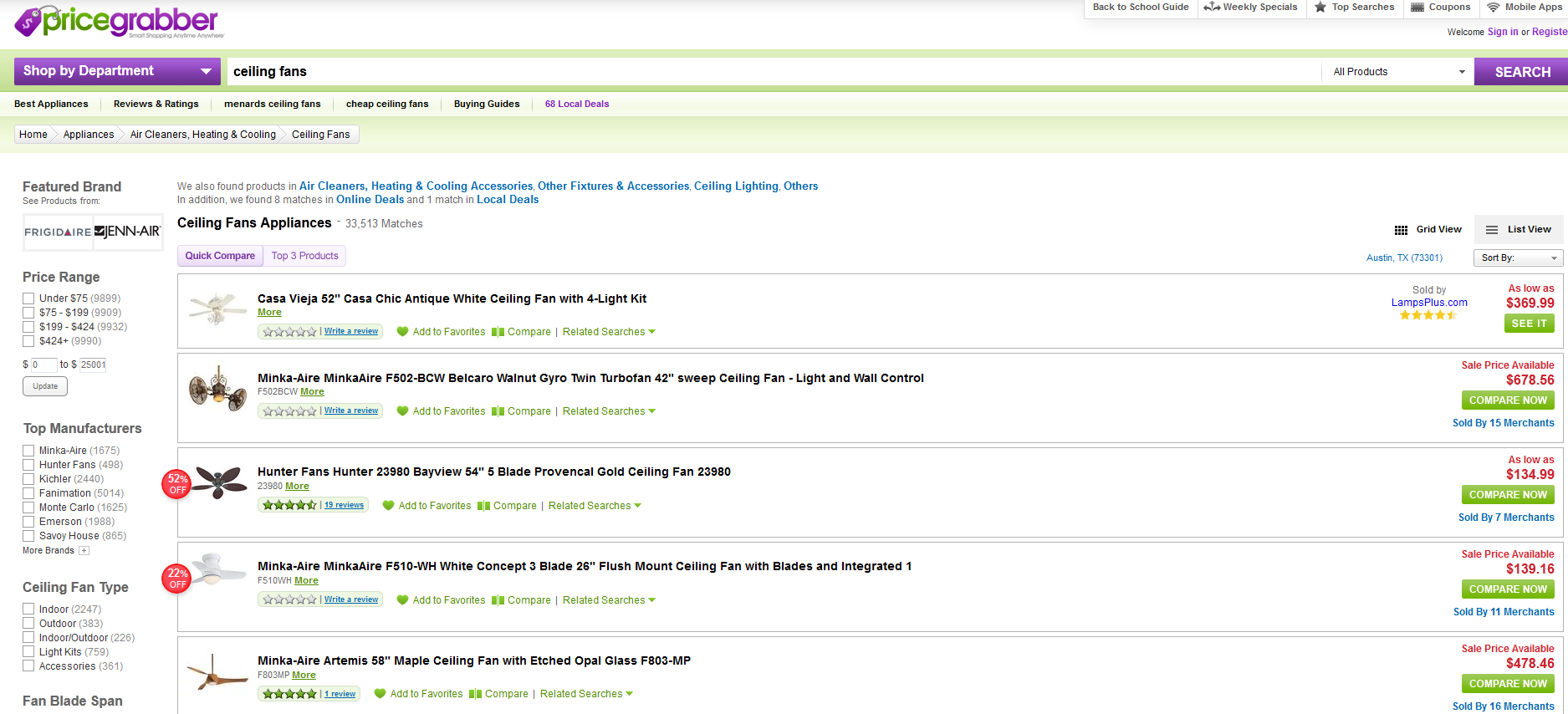
Pros of Pricegrabber
- No minimum bids
- Offers three bidding source options: bid via feed import, bidding tool, and CPC rate card value
- Has a variety of media options to garner more attention: Banner Placements, Featured Merchant, Featured Products, and Category Showcase
Cons of Pricegrabber
- Ad Spend/Budget is consumed more rapidly since ads are shown in an accelerated manner to qualified traffic
- No daily budget to control how much you spend in a day
- Have to pay a minimum of $.10 to display your logo on your ad, in addition to a minimum ad spend of $700
Insider tip on Pricegrabber
- Submit the same feed file as the one created for Google PLA
7. Become (Paid)
Become provides shoppers with the ability to compare prices easily, read product reviews and articles, participate in forums, and find the best price deals online. Founded in 2004, they have 300 partners and 30,000 registered merchants. To advertise on Become, you need a monthly budget and minimum CPC bids. Become is available in the UK, Canada, France, Germany, Austria, Italy, and Japan.
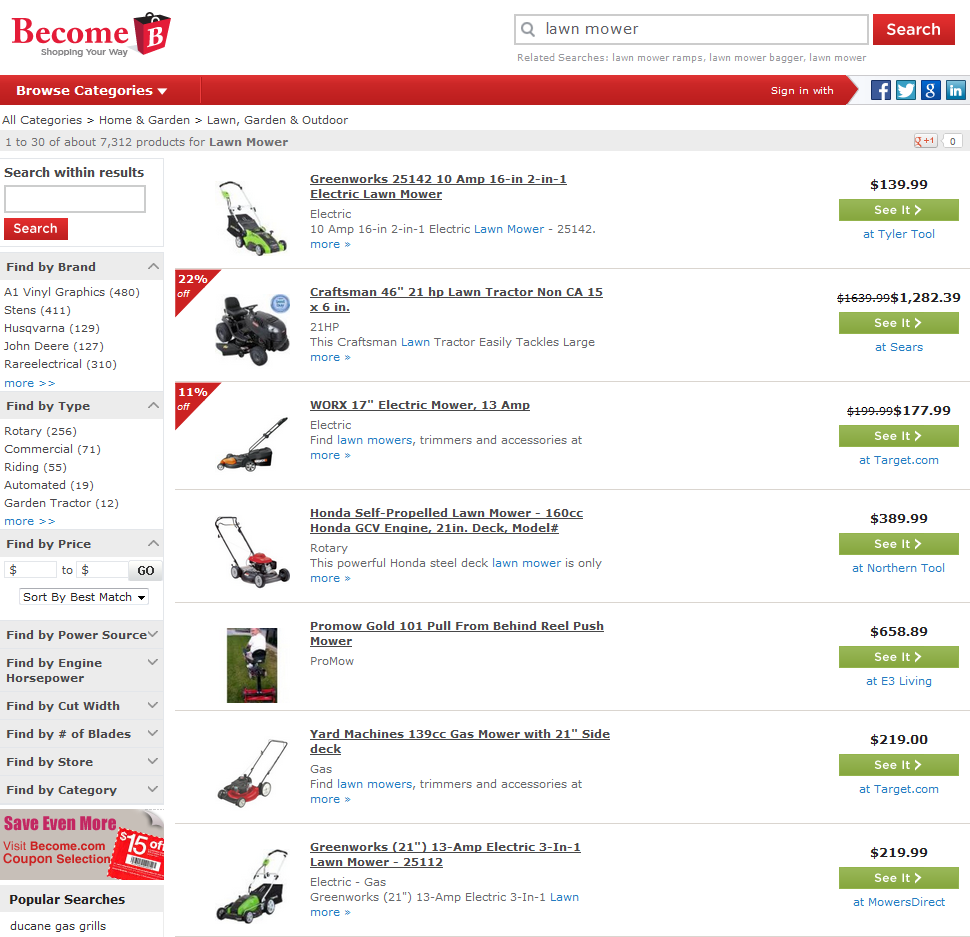
Pros of Become
- Free ROI Trackers help you see your sales
- You can bid at category, sub-category, or product level
- Keywords can be used to help gain more exposure
Cons of Become
- Minimum bid is required for all categories based on the rate card
- Promotional Text is not free; it costs at least $0.05
- You are eligible for logo placements only if you bid more than $0.05 more than category minimum bids
Insider tip on Become
- You can boost your credibility by joining their Trusted Merchant program. Simply fulfill these three requirements: have a valid SSL, valid contact info, and accept two major credit cards
8. Pronto (Paid)
Pronto has one main site and four niche sites for different verticals such as style, technology, home, and kids. The engine has 14 million unique users that are primarily looking for low-priced bargains.
In terms of advertising on Pronto, products go live when you add funds to your account. You manage the products bids through a monthly budget, and all product categories are required to have a minimum CPC bid.
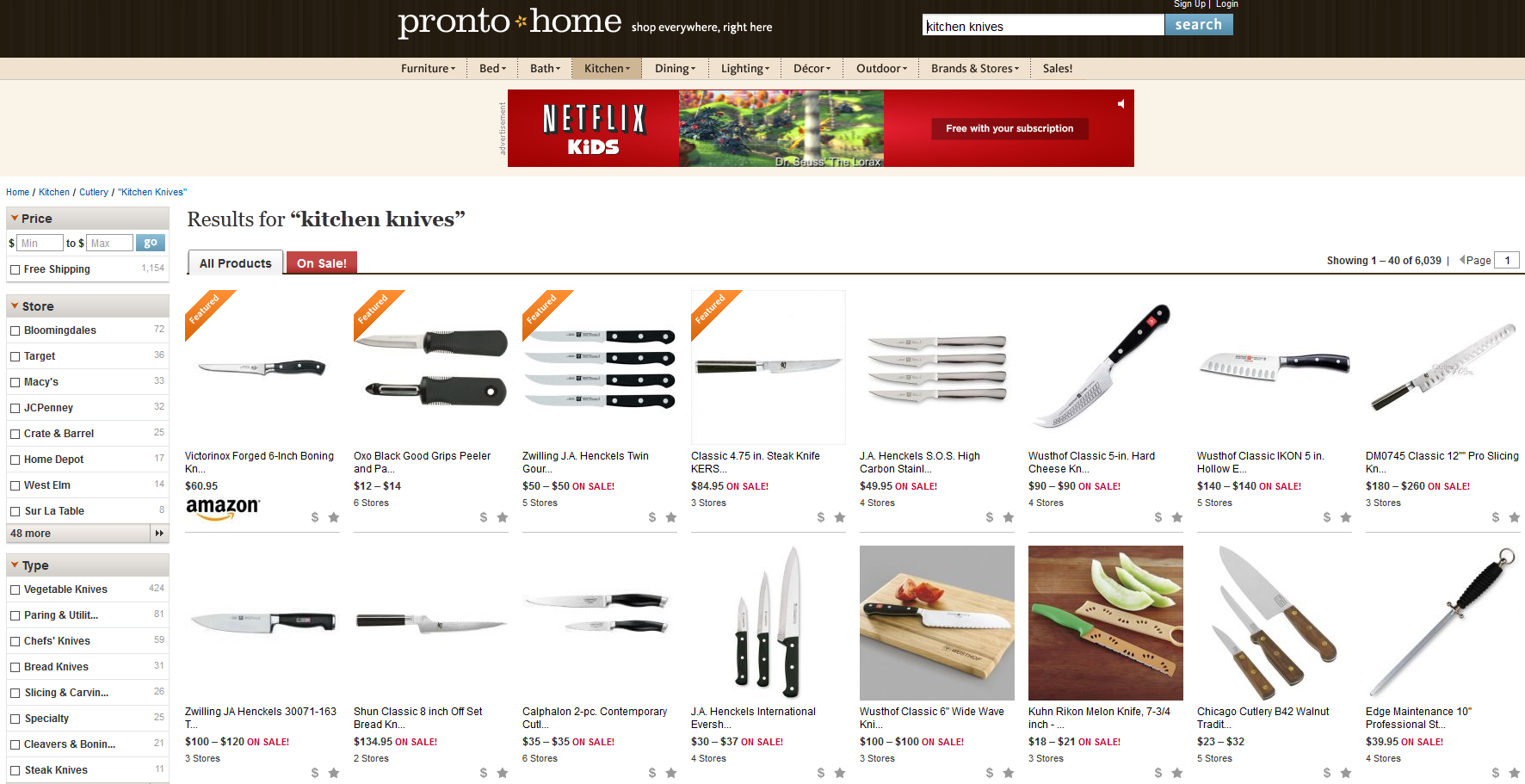
Pros of Pronto
- Increase brand trust with permanent logo placement
- Offers Featured Placement and Sponsored Listings for products to gain more visibility
- You can use the Coupons & Offers functionality to attract more customers
Cons of Pronto
- Products are automatically placed in different categories by Pronto
- Bids can't be controlled at the product level in the Merchant Center
- No daily budget
Insider tip on Pronto
- Submit product level bids in the feed file, and it will override the category level bids
9. Bing Shopping (Free)
Bing Shopping is currently free for merchants and has 159 unique searchers in the Yahoo-Bing network. It has partnered with Shopping.com to display their results, but if you don’t have a Shopping.com account and want to use Bing Shopping, you can sign up with Bing Ads to manage your merchant center. Bing Shopping is also known for displaying product data results and reviews that are shopper-friendly.
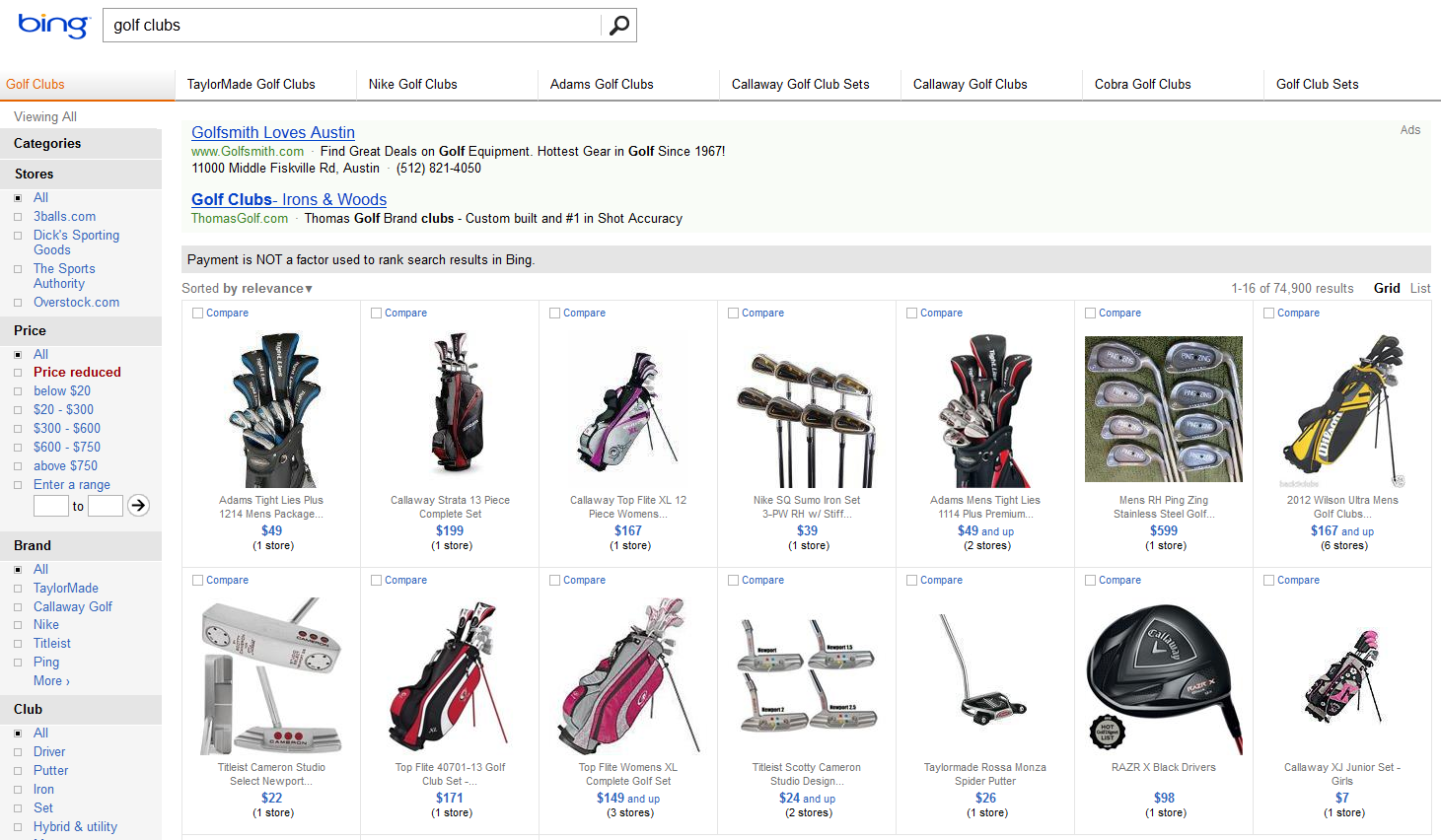
Pros of Bing Shopping
- The engine is currently free, so no bidding is required
- If you're submitting to Shopping.com, your results are also displayed and highlighted in Bing Search & Shopping pages
- Rich Caption allows products to be displayed in organic search results
Cons of Bing Shopping
- With the holiday season approaching, Bing could possibly stop accepting new merchants as seen in 2012
- ROI tracking not provided
- Categorization in the feed file has minimal influence on how Bing categorizes the products
Insider tip on Bing Shopping
- Bing is very likely introducing Paid Product Ads in the upcoming months
Although all of these CSEs are great for business, you'll want to pick the ones that best suit your needs and budget. Before you start, be sure to research which products you’re allowed to advertise on each engine and its specific feed specification requirements.











